Best Joker Movie Moments in Batman and DC History
We determine the best on-screen moments for Gotham’s Clown Prince of Crime in Batman movies or otherwise.
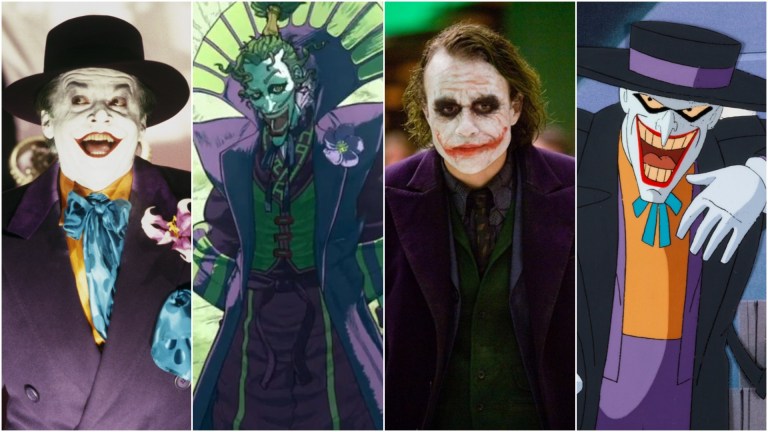
Few movie villains (not named Dracula or Darth Vader) have been portrayed as many times on the big screen as the Joker, DC’s infamous agent of chaos, the Clown Prince of Crime himself. Ever since Jack Nicholson brought this laughing madman to theaters in 1989, film-goers have been obsessed with the supervillain who plagues Gotham City and haunts the Batman‘s nightmares.
His unique appearance, unpredictable methods, indecipherable past, and insatiable hunger for evil have kept filmmakers and actors coming back for more over 30 years later, which has resulted in several reinventions of the character, most of which feel definitive for their moment. Nicholson’s turn in ’89 felt like the perfect marriage between the campy version played by the legendary Cesar Romero in the ’60s and the much darker sadist featured in the comics of the late ’80s. The late, great Heath Ledger’s Academy Award-winning performance brought us a Joker who preyed on our post-9/11 fears of terrorism. Jared Leto’s eyebrow-less, heavily tattooed clown was as unhinged as the movies he was featured in. Joaquin Phoenix, the second actor to win an Oscar for portraying the villain, turned to the contemporary real-world issues of the late 2010s, such as gun violence, class inequality, and a decaying mental health system.
This year’s The Batman introduces yet another version of the Joker, one vastly different to the ones who have come before. Played by Barry Keoghan in a brief scene at the end of the film, this Joker seems poised to play an even bigger role in Matt Reeves’ Batman sequels.
Now that the Joker is back on our screens, we want to take a moment to celebrate the villain’s very best movie moments throughout DC history, both in terms of live-action and animation. (After all, how could we forget about Mark Hamill?!) That means moments from both theatrical and home video releases are represented in the list below:
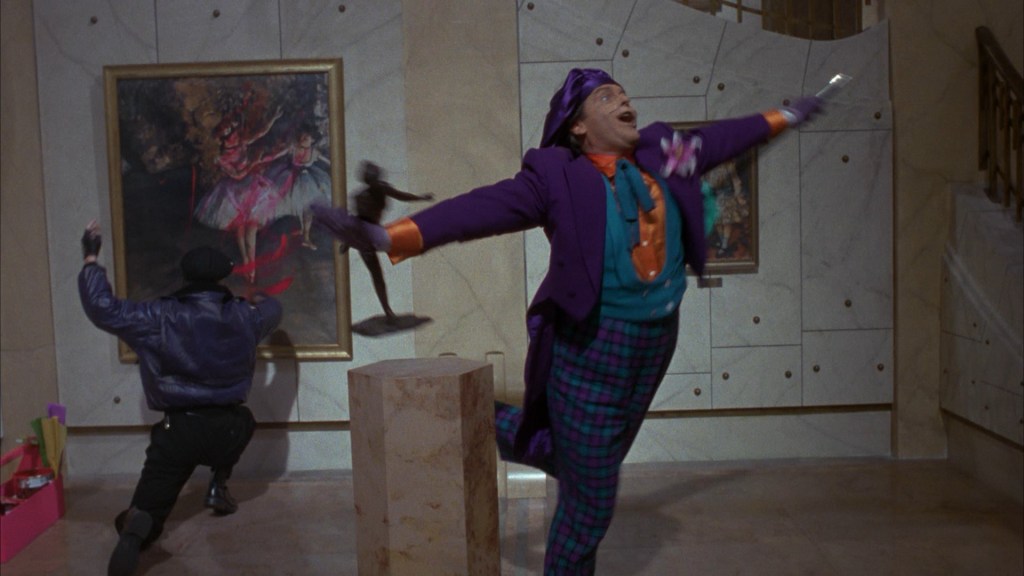
Museum Murder Dance Party – Batman (1989)
By this point in Tim Burton’s first Batman film, Jack Nicholson has already amassed quite the body count, but he’s not done yet. Joker has a big crush on photographer Vicki Vale (Kim Basinger) and has a fantastic idea for a first date, forcing her to watch as every other person in a Gotham City museum chokes to death on his signature poison gas. (“Love that Joker!”) But little does Vicki know that the mass murder she’s witnessed is just setting the mood for Joker’s big entrance.
Once the smoke has cleared, in comes the Joker and his boombox-carrying posse to get the real party started. Prince’s fun, bouncy “Partyman” accompanies the chaos and destruction that follows, as Joker dances his way through the museum, knocking over statues, while his men vandalize paintings with knives and paint brushes. It’s the kind of manic energy that defines Nicholson’s Joker, who thinks the party’s only just begun once there are a few dead bodies on the dance floor. – John Saavedra
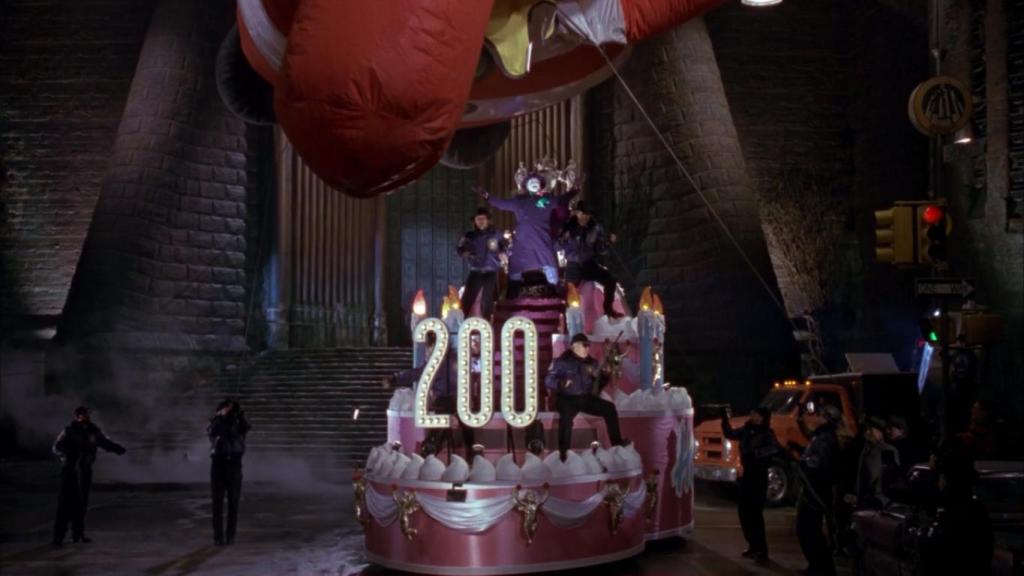
The Parade – Batman (1989)
As much as we love his clashes with Batman, the Joker isn’t dangerous because he knows how to press Batman’s buttons. He’s dangerous because he’s popular. No matter how hard Batman fights to inspire and protect the city, citizens are all too willing to embrace the kaleidoscopic craziness promised by the Clown Prince of Crime. Nicholson and Burton key into this fact for 1989’s Batman. Never mind that he contaminated Gotham’s beauty supply chain, never mind that he led a mime massacre on the steps of city hall. When Joker throws a parade for Gotham’s bicentennial, the citizens gather to celebrate.
Heading into the climax of the film, the Joker stands atop a birthday cake float and rains dollar bills down on the rabble below. Set to the thumping funk of Prince’s “Trust,” Joker holds his arms aloft as the teeming crowds cheer his coming, unaware of the poison gas in the balloons above them. “Who do you trust?” he crows into a microphone, “Me? I’m giving away free money!” The shouts of excitement that follow continue even as Joker promises to relieve the Gothamites of “the burden” of their “failed and useless lives.” As long as they can “go with a smile,” the citizens of Gotham will gladly follow the Joker into the abyss. – Joe George
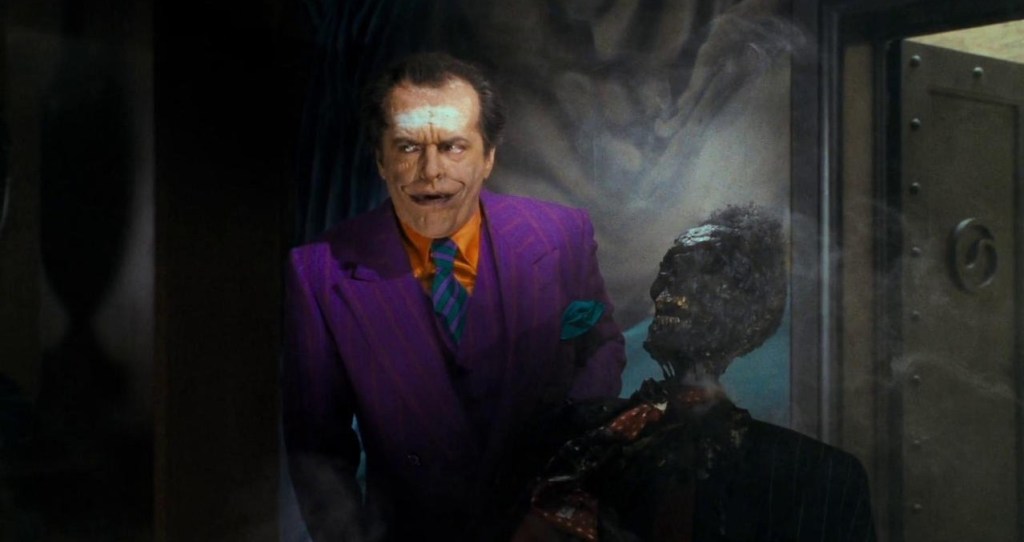
“I’m Glad You’re Dead” – Batman (1989)
There’s just something so twisted and terrifying about one of the Joker’s earliest practical jokes in Batman. Later, Nicholson will squirt acid from a flower on his lapel at Vicki Vale’s face, and much later, he’ll pull off the classic fake gun, teeth, and hand gags. But first there’s his hostile takeover of Carl Grissom’s (Jack Palance) criminal organization and a shock gangster Antoine Rotelli (Edwin Craig) won’t soon forget.
Jack Napier, now fully transformed into a psychotic clown-themed mobster, gathers all of the crime lords in the city to let them know he’s now the big boss while Grissom is on…an extended leave of absence (aka very dead). But the other criminals are skeptical and none more than Antoine, who asks, “What if we say no?” It’s a question Joker is very happy to answer.
The clown stands from the table, walks over to Antoine, and offers him a handshake, after which he promises they’ll go their separate ways. But when the gangster gives Joker his hand, Antoine is immediately zapped by a demonic joy buzzer that shoots thousands of volts of electricity up his arm, frying him to death where he stands while his killer gleefully sings “A Hot Time in the Old Town” into clouds of smoke.
And that’s not even the most chilling part. After the Joker’s men have cleared the conference room of the remaining, horrified crime lords, the clown stays behind to have a chat with Antoine’s charred corpse. He gets up close, grabs his victim by the tie, Antoine’s neck giving way with an awful crunching sound, and says, “I’m glad you’re dead,” all this followed by the echo of Joker’s uncontrollable laughter as he walks away. For the little kid’s in the audience watching for the first time, this scene was absolute nightmare fuel. To this day, few other comic book movies have offered an image as grotesque as Antoine’s smoking remains. – JS
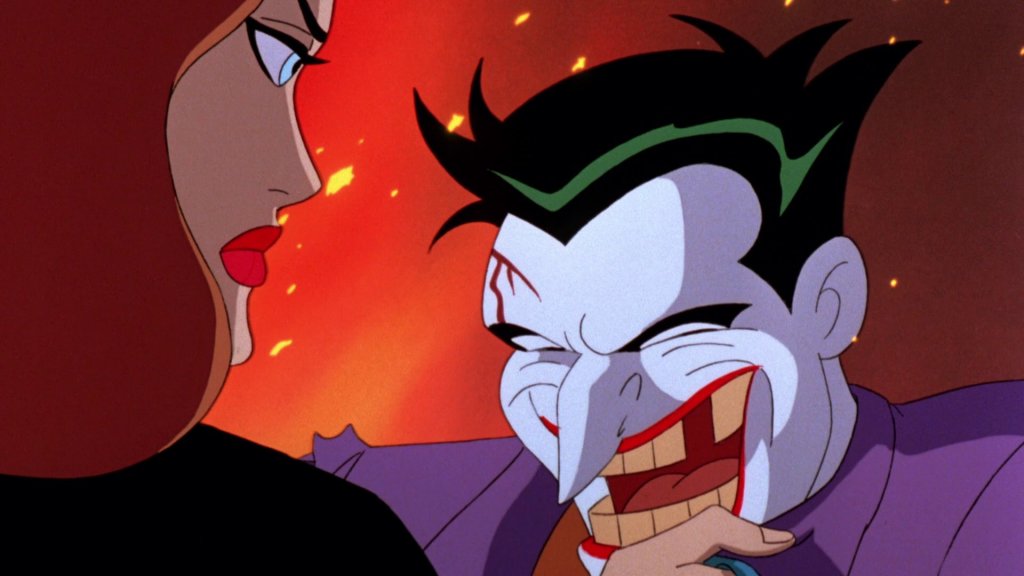
Joker’s Angel of Death Awaits – Mask of the Phantasm (1993)
Mark Hamill has long been praised for his vocal performance as the Joker, seen as one of the most definitive interpretations of the character. Hamill secured the role for Batman: The Animated Series in 1992 after Tim Curry was replaced early in the show’s production. Hamill expertly melds the camp Clown Prince of Crime Golden Age version of the character with something darker and sinister, and while his work in the Arkham video games may be his crowning achievement as the character, his only big screen, wide-release crack at voicing Joker was in 1993’s Batman: Mask of the Phantasm.
The film centers on a mysterious figure preying on Gotham’s organized crime families, leading one scared mobster to hire Joker for protection, believing Batman to be the one taking out gangsters. Of course Joker’s involvement throws everything into chaos, and once he learns that a new figure named the Phantasm is behind the killings and not Batman, he’s able to deduce that Andrea Beaumont, a figure from Bruce Wayne’s past, is the masked crusader.
When it is revealed that Joker killed Andrea’s father, Andrea pursues Joker seeking revenge. A showdown between Andrea (as the Phantasm), Batman, and Joker then takes place at Gotham’s abandoned World’s Fair. Joker is wildly entertaining in the film’s third act, vacillating between being cut-throat and murderous, to cowardly and comedic. When it looks like Andrea may risk taking herself out to get revenge on Joker, Hamil lets out pound-for-pound the most perfect Joker laugh ever recorded. Seriously, it’s spine-tinglingly good. There will surely be many more big screen versions of this character, but no one will ever ace the laugh like Hamill. – Nick Harley
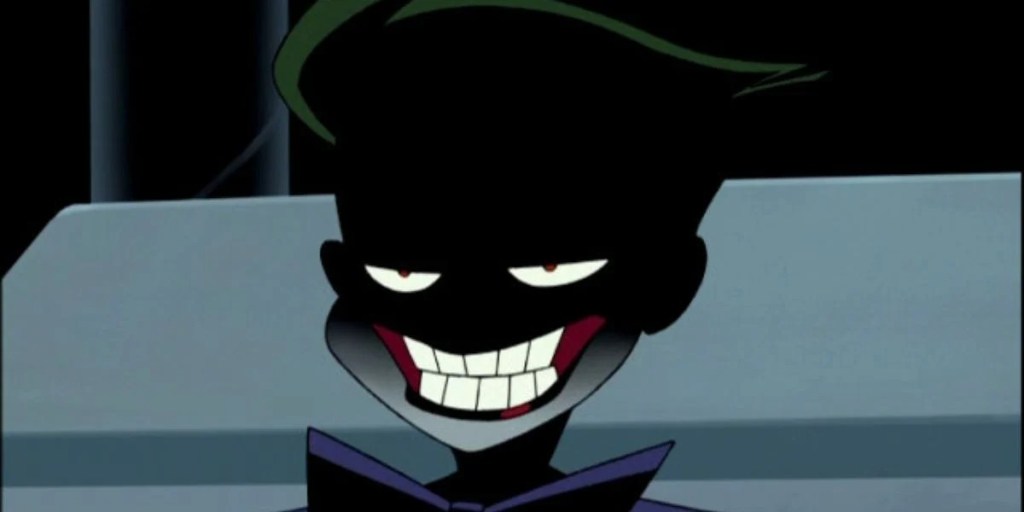
I’ve Got Slides – Batman Beyond: Return of the Joker (2000)
Batman: Beyond: Return of the Joker is not the most famous Batman or Joker movie. Indeed, it’s one of the few on this list that never even had a theatrical release. Yet we would argue that Mark Hamill’s vocal performance as Mistah J has never been crueler or more terrifying than in the scene where Batman and the audience discovers whatever happened to The Animated Series’ Tim Drake.
In a twisted sequence wholly invented by Paul Dini and Bruce Timm, after Robin goes missing for several weeks, the Joker and Harley Quinn lure Batman and Batgirl to a dilapidated site where the Joker reveals via black and white home movie reels that he’s brainwashed Robin into becoming a literal mini-joker through torture and drugs. It is dark, nasty, and also the most twisted TAS Joker ever got. He even sneers he now knows Batman’s secret identity, coldly laughing at Bruce’s mommy and daddy issues. When Batman inevitably comes to deliver a brutal beatdown, the Joker just deadpans, “If you don’t like the movie, I’ve got slides.” (Shudders.) – David Crow
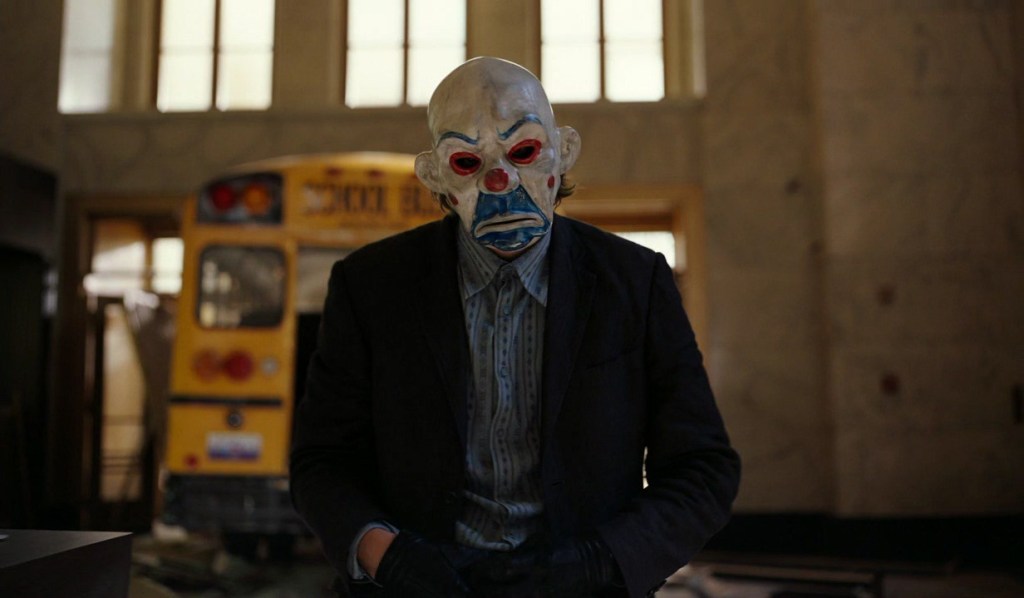
The Bank Robbery – The Dark Knight (2008)
The opening scene of director Christopher Nolan’s Bat-masterpiece is doing three things at once. Not only is it the sequence that needs to hook viewers and kick off the plot, and it’s not just an introduction for the Clown Prince of Crime. It’s also about transformation, meant to show how, in Ledger’s words later in the movie, Batman has changed things forever. His birth in the first film in turn has opened the door for a new, “better class” of criminals.
Almost dizzying in its energy, fast cuts pull us into what at first seems like a conventional blockbuster bank heist. A group of thieves in clown masks split up to tackle the Mission: Impossible-like tasks that will end with them enjoying a massive payday. Except the mysterious man in charge has also instructed the robbers to kill each other off so they don’t have to split the money among so many people.
By the end of the scene, you know these thieves have been played by the shark among them, and that the man in charge is anything but conventional. As he removes his mask to reveal his real face, a grotesque, heavily scarred visage under mounds of sloppily caked on makeup, we know the time of traditional criminals is over in Gotham. Here’s a guy who plans an entire, deadly bank robbery around a punchline that literally kills. What’s even funnier, as the Chechen (Ritchie Coster) learns much later, Joker doesn’t even care about the mob’s money. He just wants to watch it burn. – JS
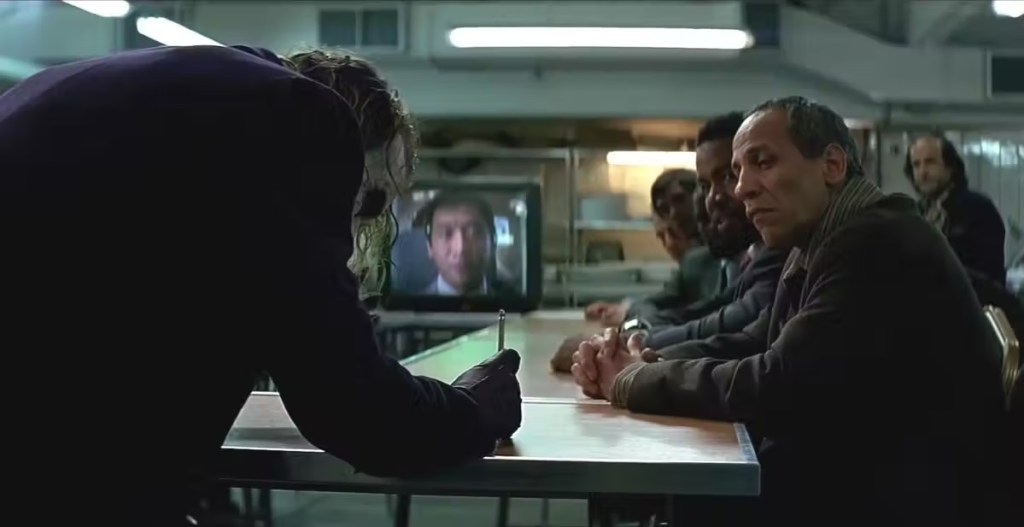
Magic Trick – The Dark Knight (2008)
One of the most frequent criticisms of Nolan’s Dark Knight trilogy is that it takes itself too seriously. While the three movies within it range from good-to-masterpiece level, it can’t be denied that they’re almost singularly responsible for making the DC Universe films to come after it a little more dour than they needed to be. What those criticisms miss, however, is that Heath Ledger’s Joker can also be really funny!
Take for example The Joker’s second scene in The Dark Knight. His introduction to Gotham City’s biggest players in organized crime immediately establishes him as dangerous, capable, quite clever, and perhaps a little unhinged. Joker opens the meeting by making a pencil disappear into some goon’s eye socket, as one does. He then accurately diagnoses the gangster’s problem: Batman. He also correctly surmises that the only solution to a masked freak running around the city at night is another masked freak running around the city at night like him. This scene, more than any other in Nolan’s trilogy, really hammers home how a relatively normal, yet corrupt city like Gotham can quickly become a comic book mad house.
Not only that but Joker’s deadpan “yeah” to Gambol’s “you think you can steal from us and just walk away?” is the biggest laugh I’ve ever heard an audience share during a Batman film. – Alec Bojalad
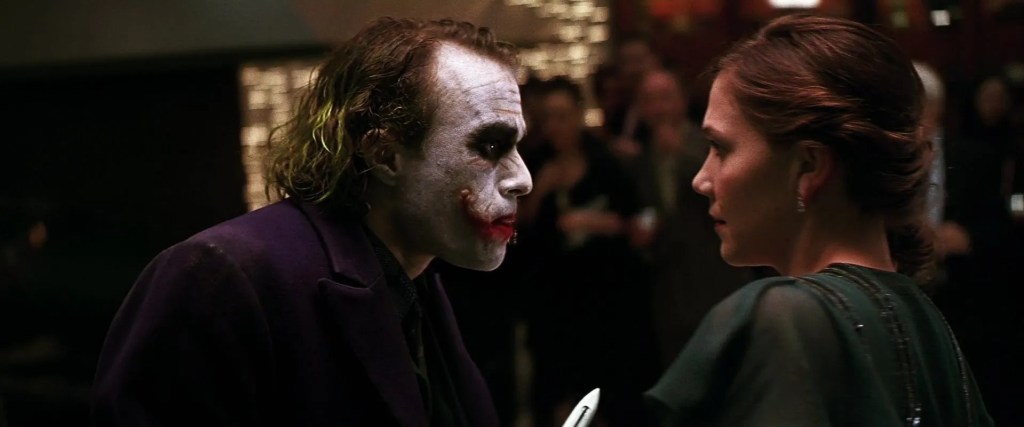
You Want to Know How I Got These Scars? – The Dark Knight (2008)
The love for Heath Ledger’s dazzling (and some might say definitive) version of the Joker continues in one of the other most quoted sequences in the film. The scene folks most think about when they hear the above line is where Joker sets out to mentally torment the gangster Gambol (Michael Jai White) before carving up his face. It’s when he first utters, “Do you want to know how I got these scars?”
But the moment we most remember about this line is when he drops it a second time while gearing up to do the same to assistant district attorney Rachel Dawes (Maggie Gyllenhaal). What’s striking is that as Nolan’s camera breathlessly encircles the pair, and Hans Zimmer’s score steadily raises the anxiety, Ledger is telling with complete conviction an entirely different origin story.
See, this Joker is a liar, a trickster with no backstory and no motivation. He shifts his malevolence into whatever shape he thinks will hurt the next victim most, but at the end of the day he is an enigma with no rhyme or reason. He just wants to watch you squirm… and then burn. – DC
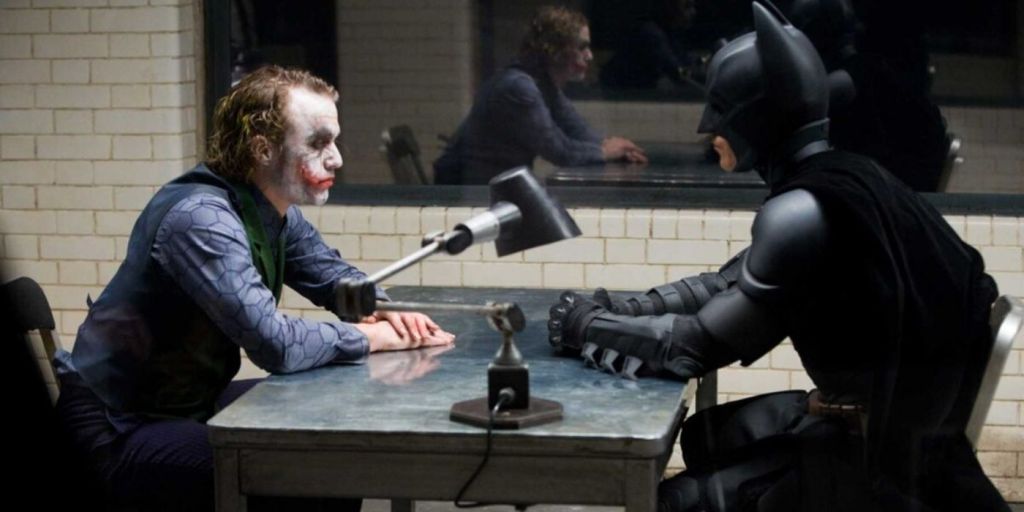
The Interrogation – The Dark Knight (2008)
The “we’re not so different, you and I” hero vs. villain trope is a tired one these days, but that’s because The Dark Knight perfected this scene in 2008 when it comes to comic book movies. Here is Ledger’s Joker basically laying out to the Batman the entire thesis for why they’re destined to take part in this dance of death for all eternity. Because no matter how righteous and moral the incorruptible Batman is, he’s ultimately still a freak in a costume just like Joker. The people of Gotham will never truly accept a violent man dressed as a bat as one of their own and so all the hero really has is his devoted but psychotic arch-nemesis.
The scene is not only meant to define on the big screen once and for all why the Batman/Joker dynamic is one of the greatest in modern storytelling, but also to set up one of the film’s best twists. Joker has strapped both Harvey Dent (Aaron Eckhart), Gotham’s white knight, and Rachel Dawes, the love of Bruce’s life, to explosives and Batman only has time to save one of them. The Dark Knight proceeds to mercilessly throw the clown around the GCPD interrogation room, a tense moment where you think Ledger’s giggling maniac has finally found the switch that will make Batman break his one rule.
Even years after Zack Snyder gave us a version of the Bat that does kill in Batman v Superman: Dawn of Justice, this scene is still one of the most shocking in Batman movie history, anchored by a scene-stealing performance by Ledger, who looks like he’s really enjoying being beaten within an inch of his life. – JS
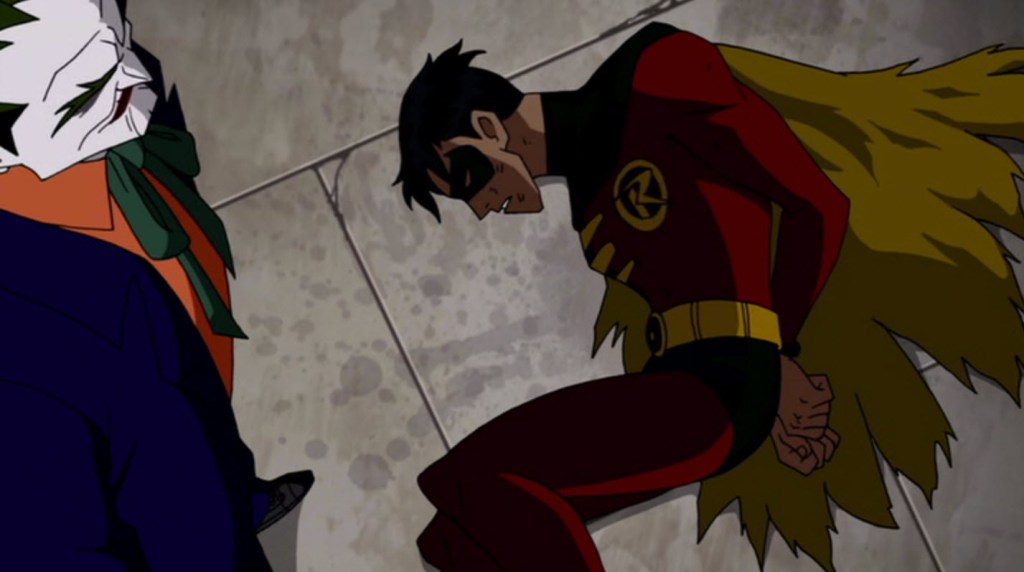
The Death of Jason Todd – Under the Red Hood (2010)
Too often, actors playing the Joker only lean on the character’s maniacal qualities, leaving the other aspects unexplored. So it’s a bit of a relief when an actor finds a new angle to the multifaceted madman, retaining the menace without repeating the same familiar beats. For the 2010 direct-to-video movie Batman: Under the Red Hood, celebrated voice actor John DiMaggio offers a refreshing and terrifying version of the villain. Despite the title, Under the Red Hood is also in part an adaptation of one of the most famous Batman stories of all time, Death in the Family, in which the Joker murders the second Robin, Jason Todd. Given the wackiness of the original story from 1988’s Batman #427, which also involves the Joker joining the Iranian government, one could imagine another goofy and over-the-top performance.
Instead, DiMaggio makes the Joker unnervingly quiet as he beats Todd to death with a crowbar. Lowering his signature growl to a near-whisper, DiMaggio sounds almost empathetic as he asks, “So, let’s try and clear this up, okay, pumpkin? What hurts more? A or B? Forehand or backhand?” Punctuating each question with a swing of the crowbar, Joker quietly takes in Todd’s whimpers until he can no longer control it, letting loose with a cackle. Unlike the zanier takes that we’ve seen elsewhere, DiMaggio’s Joker is methodical and almost reverent as he kills Robin, proving once again that unpredictability is his greatest weapon. – JG

Romantic Nemeses – The Lego Batman Movie (2017)
For 82 years, Batman and the Joker have been stuck in a cyclical relationship. The Joker tries to take over or at least create chaos within Gotham, and Batman is tasked with stopping him. Batman almost always succeeds, but somehow when the dust settles, Joker always gets away. Cycle, rinse, repeat. Joker is Batman’s greatest foe, and their relationship is like the Chicken/Egg conundrum; did criminals like Joker create Batman, or did Batman create criminals like Joker? Can it be both? They’re so tethered to each other, and based on what continuity you’re following, had a direct hand in creating the other. They’re also borderline-obssessed; mostly, Jokers acts of terrorism are motivated by nothing more than getting a rise out of Batman, and Batman refuses to end his war with Joker, keeping him alive despite his better judgement, basically ensuring that the two will fight forever.
With so much history, interconnectedness, and obsession, is it possible that there’s something…romantic between the two of them? After all, they say there’s a very thin line between love and hate. A psychosexual element to the Batman/Joker relationship has been more than just subtext ever since Frank Miller’s The Dark Knight Returns, but strangely, the only cinematic version of these characters that explores this reading of their relationship is also by far the silliest and mostly aimed at children.
Yes, The Lego Batman Movie and Zach Galifianakis’ version of Joker plays the romantic angle between Joker and Batman’s decades-long affair mostly for laughs, but it’s a unique depiction of their dynamic that helps drive the film’s plot and furthers Batman’s character arc in the film, going from a loner who “doesn’t do [relation]ships” to the leader of a Bat-family. Having Joker tear up at hearing Batman declare that he likes to “fight around” is somehow both hilarious and a little poignant. You almost feel sorry for the little sociopath. The film features a great take on their relationship that should be explored more seriously in the next live-action face-off between these two toxic lovers. – NH
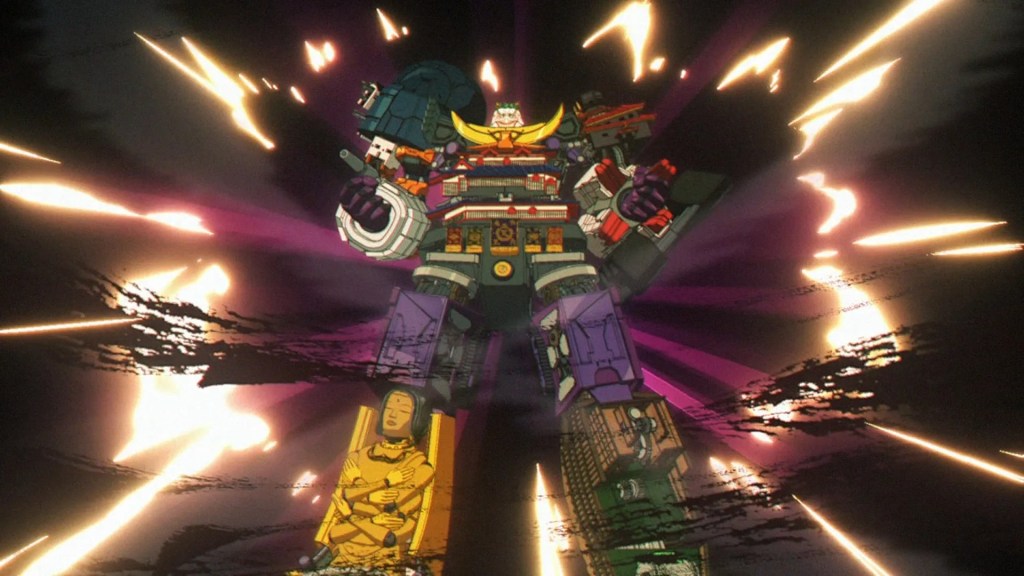
Super Robot Lord Joker – Batman Ninja (2018)
2018’s Batman Ninja is arguably the wildest Dark Knight tale ever committed to the screen. Directed by Junpei Mizusaki, with some of our most familiar DC characters redesigned by Takashi Okazaki (Afro Samurai), the film’s plot throws you into a world where Batman is caught up in Gorilla Grodd’s Quake Engine time displacement machine (don’t worry about it), and is sent to feudal Japan. When he gets there, he realizes that Gotham City’s top criminals have already become feudal lords. The Joker (dubbed in English by Tony Hale) and Harley Quinn (Tara Strong) are very much on the loose and out for Batblood.
If you think you know where this is going, let me assure you that you do not. Towards the climax of Batman Ninja, the Joker doesn’t take kindly to Grodd snatching his castle, and reclaims it before he merges all of the castles into one super robot Lord Joker. A battle of epic proportions then ensues between the Clown Prince of Crime and a Batgod. It is an absolutely phenomenal Joker moment that proves the DC magic can work just about anywhere and anyhow, and if you haven’t had the pleasure of witnessing it for yourself yet, I urge you to correct that as soon as possible. – Kirsten Howard
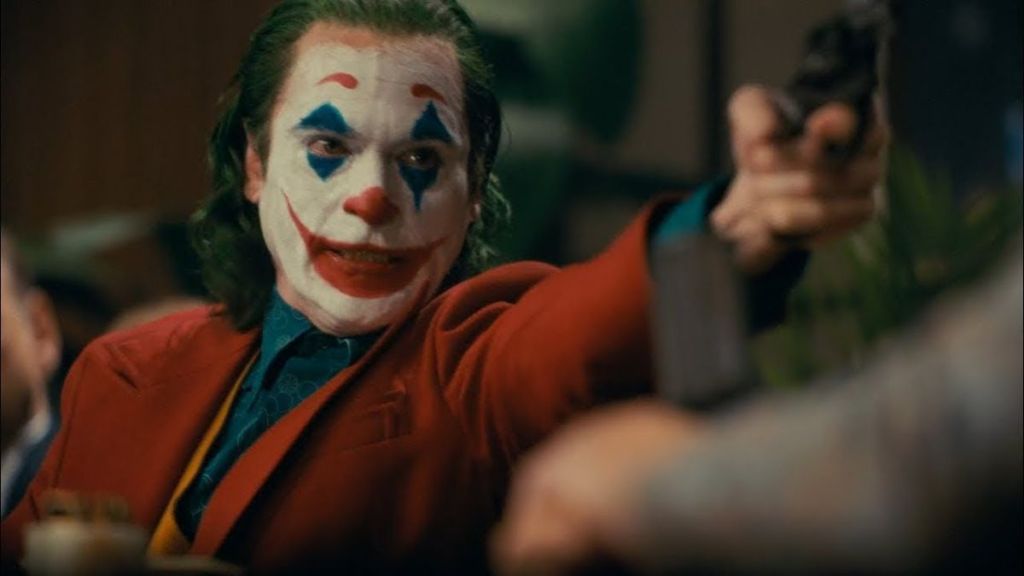
You Get What You Deserve – Joker (2019)
Joaquin Phoenix’s Joker never quite feels like the infamous comic book character, but troubled sad sack Arthur Fleck still provides an unsettling presence throughout the picture. It’s only at the end, however, after killing his own mother (among others), that he dons the famous makeup and green hair—and does something worthy of even the bleak Frank Miller version of the character.
Going on his favorite late night talk show, the newly re-christened “Joker” arrives planning to kill himself on live TV. But after looking at the finger waving moral superiority of his one-time idol (Robert De Niro by way of Johnny Carson), he decides to kill him instead, shouting, “What do you get when you cross a mentally ill loner with a society that abandons him and treats him like trash?! You get what you fucking deserve!”
The brutal sequence is a synthesis of 1970s influences on writer-director Todd Phillips—Taxi Driver, Network, The King of Comedy—and is more an unsubtle and unfocused critique of social ills than it is the origin story of a supervillain. But it’s powerful, disturbing stuff in Phoenix’s hands, and it won’t be soon forgotten. – DC
